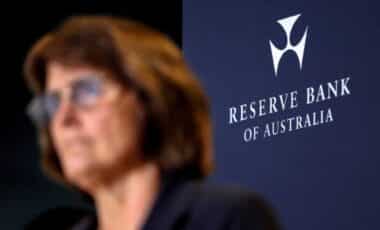As the Reserve Bank of Australia (RBA) prepares to meet next week, Australia’s Big Four banks have aligned their forecasts, predicting a 0.25% cut in the cash rate. This prediction comes after a period of sluggish retail spending, weakening consumer confidence, and global economic uncertainty, all of which suggest that the RBA may soon take action to ease pressure on borrowers.
The expected reduction in the cash rate would bring the official rate down to 3.60% and is widely seen as a sign of the RBA’s efforts to manage the economic recovery while keeping inflation in check. With the meeting scheduled for July 8, all eyes will be on the central bank’s decision and the potential ripple effects it may have on the broader economy.
Consensus Among the Big Four Banks
Commonwealth Bank (CBA), Westpac, NAB, and ANZ are all predicting that the RBA will cut the cash rate by 0.25% at its upcoming meeting. This forecast follows recent economic data that has caused the banks to reassess their earlier predictions, with inflation showing signs of slowing and consumer spending experiencing a decline.
ANZ, the last of the major banks to revise its forecast, joined its peers in calling for a rate cut. The bank’s Adam Boyton, head of Australian economics, pointed to weak retail sales and stalled consumer confidence as the key drivers behind the prediction. Boyton added that uncertainty in global trade, particularly concerning the expiry of the U.S. tariff pause, has added to the pressure on the RBA to act sooner than previously expected.
Consumer Confidence and Inflation Data Drive Predictions
The shift in predictions comes after the release of the Consumer Price Index (CPI) for May, which showed a decline in inflation to 2.4%, down from 2.8% in April. This easing in inflation, the best result since late 2021, has reassured economists that the RBA could safely ease interest rates without sparking runaway inflation.
Belinda Allen, senior economist at Commonwealth Bank, noted that the recent CPI data, combined with other economic indicators, has provided comfort to the RBA that a return to a neutral cash rate is both manageable and necessary. Despite the predicted rate cut, Allen emphasized that the decision will still be a close call, and there could be discussions on either holding the cash rate or cutting it by 25 basis points.
Commonwealth Bank, Westpac, NAB, ANZ reveal interest rate cut predictions ahead of RBA meeting https://t.co/9xBh4HkKdA
— Yahoo Finance Australia (@YahooFinanceAU) July 5, 2025
The Role of Global Trade and Uncertainty
As Australia faces domestic challenges, global factors are also influencing the RBA’s outlook. The expiration of the U.S. tariff pause and ongoing uncertainty surrounding global trade have created a complex economic landscape. According to Westpac’s Belinda Ellis, the RBA is mindful of these external risks and may decide to cut rates in line with market expectations to maintain financial stability.
Ellis noted that while the rate cut may seem imminent, it is not yet guaranteed, as the upcoming quarterly inflation numbers could reveal a different picture. The continued volatility in global trade is likely to be a key consideration for the RBA as it decides whether to proceed with the rate reduction or hold off for further data.
Impact on Homeowners and Borrowers
If the rate cut materializes, it would provide much-needed relief for homeowners with mortgages. For an average $600,000 loan with 25 years remaining, borrowers could see their monthly repayments drop by around $90. If further rate cuts occur later in the year, repayments could decrease even more, potentially offering homeowners up to $350 in monthly savings.
While the rate cut would be welcomed by mortgage holders, economists and analysts are cautious about the broader implications. The decision reflects the RBA’s efforts to balance its dual mandate: managing inflation while ensuring that economic growth remains on track.









